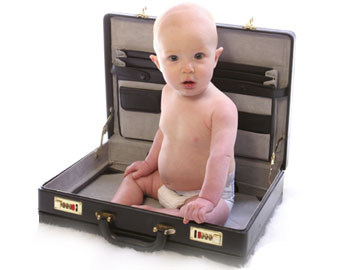Supporting Employees with Child Care
Reducing the impact of the child care shortage
Despite Government efforts to improve the affordability and accessibility of child care, Australia still faces child care shortages in many of its biggest cities. This poses a significant obstacle to parents wanting to return to work after the birth or adoption of a child as many are simply not able to secure high quality child care when and where they need it.
Tom Hardwick, the Chief Executive Officer of Guardian Early Learning Group, one of Australia’s largest private child care provider and operator of more than 65 child care centres across the country, has said this situation has forced some employers to take matters into their own hands as illustrated by the increase in organisations offering on-site child care facilities.
Mr Hardwick claims that companies are increasingly motivated to support employees with their child care issues due to the environment of near-full employment and a commitment to attracting and retaining women during and after the birth of a child.
Other benefits of helping parents secure child care include lower absenteeism, improved employee loyalty and morale, favourable public relations for the organisation, reduced staff turnover rates, improved reputation as a family friendly employer, increases in productivity and a reduction in costs.
For employees the benefits are manifold and include greater flexibility in working hours, reduced commute times, better work life balance, the ability to return to work when desired and a decrease in stress and guilt levels from knowing children are close by.
Mr Hardwick agreed that there are significant productivity gains to be made from having children close to the place of work. But he said that while companies understand the benefits of helping working parents with their child care for many this understanding doesn’t translate to action due to a lack of knowledge about how to move forward, concerns about costs, usage rates, space constraints and so on.
Mr Hardwick said there are a range of options available to organisations wanting to support their employees in their quest to secure child care, and that the solutions can be tailored to fit the size and requirements of the organisation at hand. Some of the child care services available to organisations include:
- Providing an on-site child care facility for the exclusive use of the organisation’s staff
- Offering a partnered model, where two or three companies work together to create a shared facility for the exclusive use of the combined staff. This can work well in organisations which share floors in a building.
- Providing corporates with a priority of access model, which offers the staff of the organisation first access to child care places as vacancies arise and
- Providing reserved places at centres whereby a fixed number of places are set aside for that organisation, which then has the ability to provide those places to its staff.
In the scenarios described above the employee using the child care service would pay their child care fees directly to the centre and the corporate would pay for any unused places and/or a management fee for the right to hold places for their staff.
For companies considering providing onsite facilities there are also cost benefits.
“Where an employer provides on-site child care for their staff, the structure of which falls within approved guidelines, those staff are able to salary sacrifice their child care fees as an allowable fringe benefit.
“Where staff are on the top marginal tax rate and are reasonably high users of child care, salary sacrifice lowers their net cost as well as lowering employer on-costs,” Mr Hardwick told HCAmag.com.
Minister for Child Care Ms Kate Ellis recently visited biotech company CSL which operates an onsite child care centre for employees in Parkville, Victoria.
CSL invested nearly $5 million in constructing the child care centre which Ms Ellis says offers some insight into what workplaces of the future might look like if other employers follow the lead afforded by CSL.
“This child care centre has been a huge success and builds on CSL’s progressive diversity policies including up to two years parental leave, 12 weeks paid maternity leave and flexible working conditions such as part-time work, job sharing and the ability to work from home.”
“…it is a proven model for other businesses to consider to help support and retain employees.
We want to encourage more employers like CSL to consider their employees’ child care needs and provide more child care options to help meet demand and retain staff,” said Ms Ellis.
If you would like more information on helping your employees secure child care or if are interested in finding out how the options described above could work in your organisation click here
1. Australian Bureau of Statistics
This Better Workplace Bulletin was First Published in February 2013






